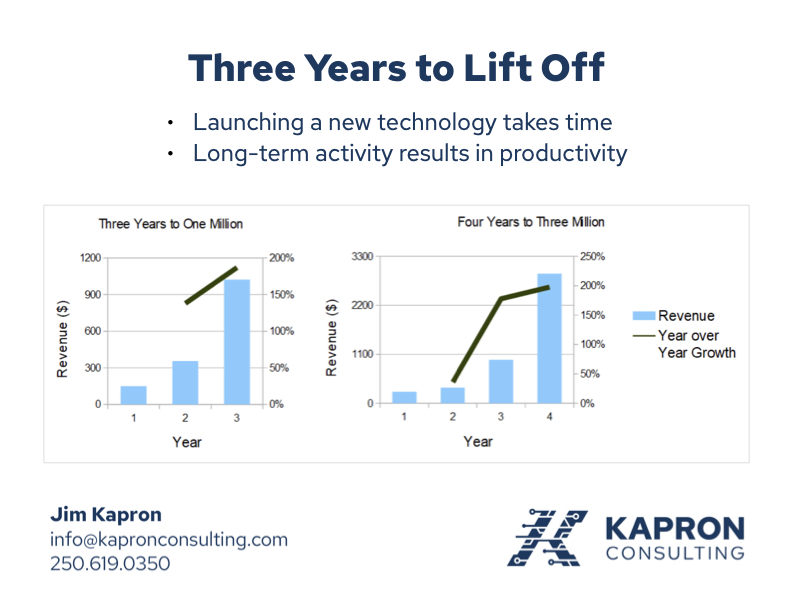3 Years to $1M, 4 Years to $3M
This case study outlines how my method of long-term, low-dose sales has proven itself twice, in two different geographies, with two different product mixes.
Inventors urgently want sales, but urgency can appear to customers as desperation. Desperation at best reduces prices, and at worst hinders sales. Long-term, low-dose sales is the solution.
Situation
The sales territories had two things in common:
- The company had a questionable reputation; and
- There was neglect by the sales organization
My challenge was to improve sales to a profitable level.
The first geography was in my home turf. I was a new sales person, with stars in my eyes and a mission to succeed.
The second geography was six years later, in a different landscape. The customers had a different vision of success and a newly developed product mix.
Actions
Goal #1: Rebuild Reputation
To improve the company's reputation, I had to supplant it with my own. The old approach of phoning and emailing customers directly to get a sales visit just was not working.
The database of customers was old: 75% of the clients were either retired or had passed away. The remaining 25% no longer had any trust in the company due to some rash decision-making in the distant past.
Takeaway #1: Customers take their time when changing their perceptions, especially when burned before.
Goal #2: Reestablish Trust
To get the attention of prospects, I held lunch-and-learn meetings with our in-house industry experts, I attended local industry events, and used social media to great effect. I made tiny promises and kept them. With each additional promise kept, customers began to believe that I represented a new approach to business.
Takeaway #2: Talk is cheap. Make tiny, progressively-larger promises, and keep each one on the day that you promised to fulfill it.
Goal #3: Replace Old Perceptions
Within eighteen months, my constant and consistent efforts were paying off with early small sales. To change the perception of neglect in the customer's mind, I demonstrated to every customer that the company I represented would support them.
As more customers began to believe and started to explore the company's offerings, I had a new job to do: I had to sell to the very folks that hired me in the first place, and ensure my company would be there for their customers.
Takeaway #3: It’s one thing to get a customer to want to buy. It’s another thing entirely to convince the company to sell.
By the third year, in both geographies, large orders were scheduled to be booked, but in each case there were obstacles. To remove them, I brought in the right resources. Sometimes it was as simple as an online meeting with my boss. Other times, I brought in the Vice President of Sales, and still other times, the President of the company.

Results
As you can see in the charts above:
- Sales in the first two years were low, but always increasing
- It took a full three years in both geographies to reach one million dollars in sales
- In the fourth year, sales reached three million, with year-over-year growth above 125%
In both geographies, I was able to leave the territories in good condition for the next sales person.